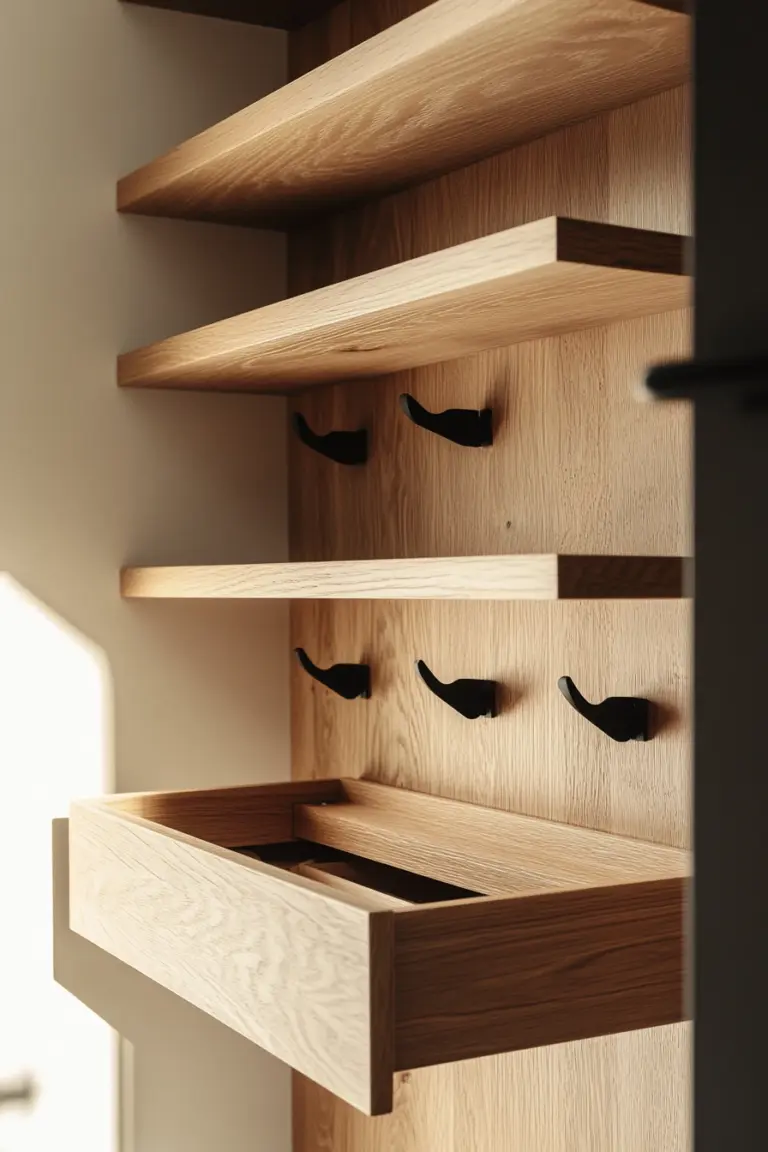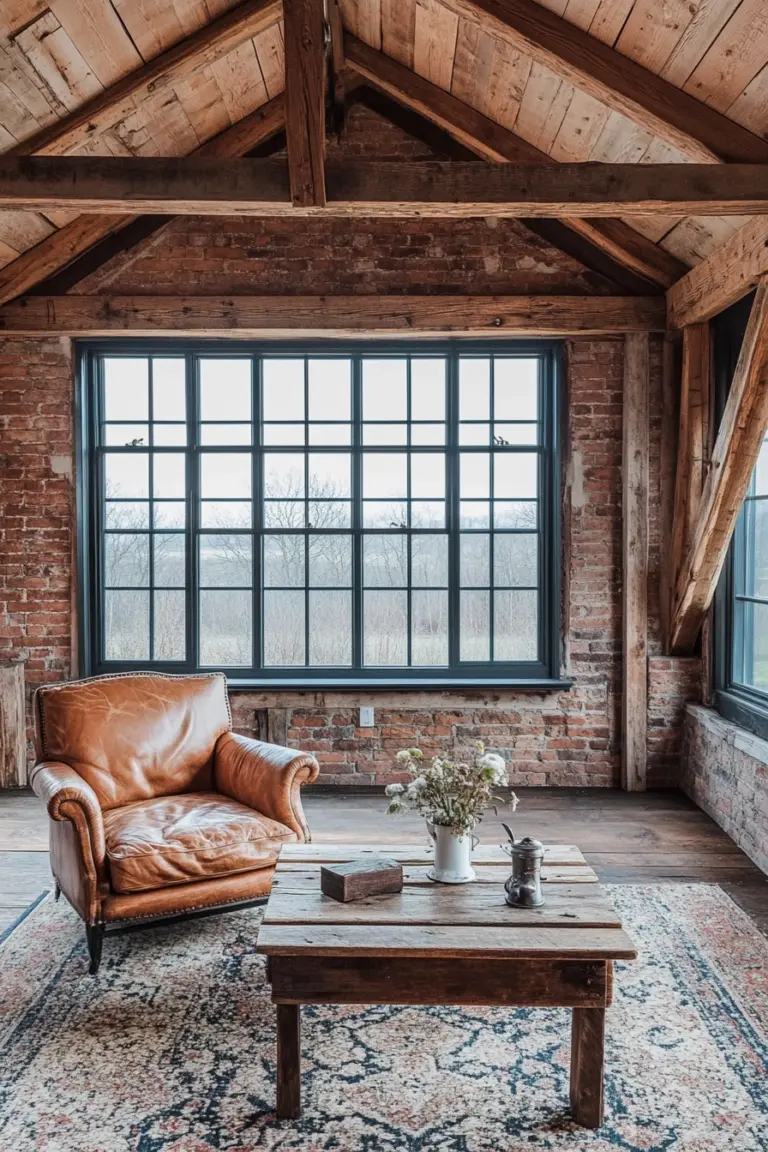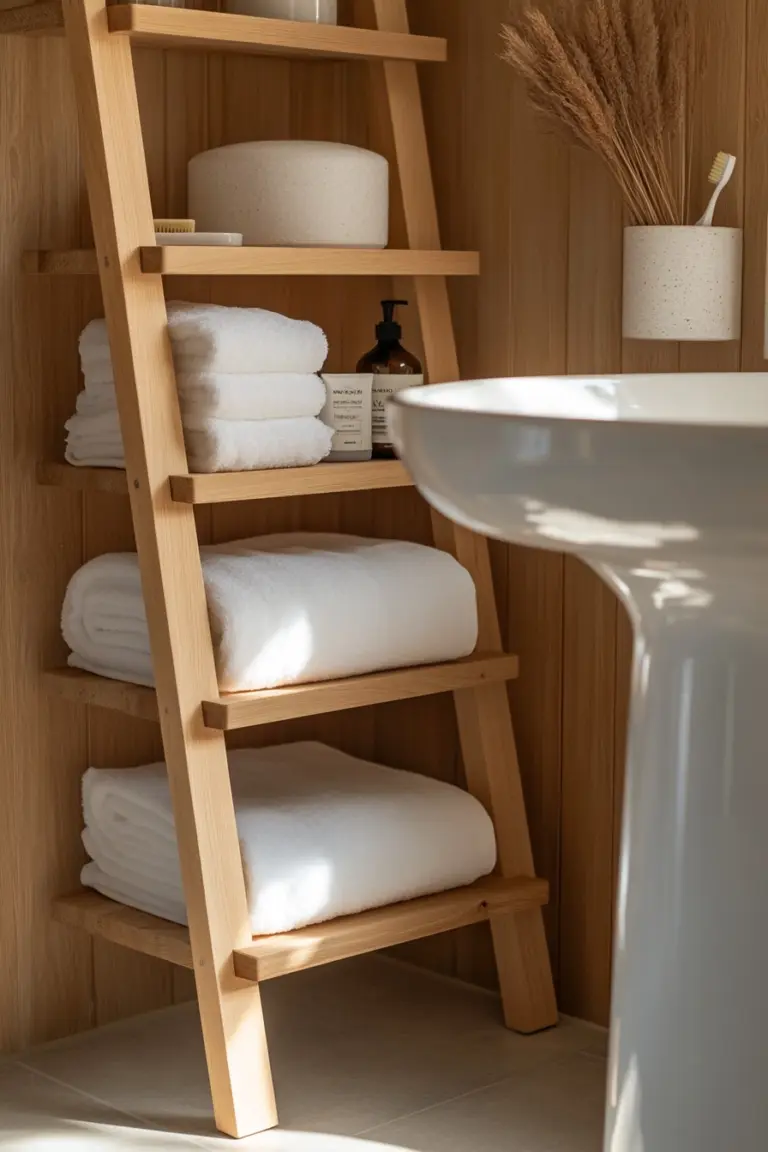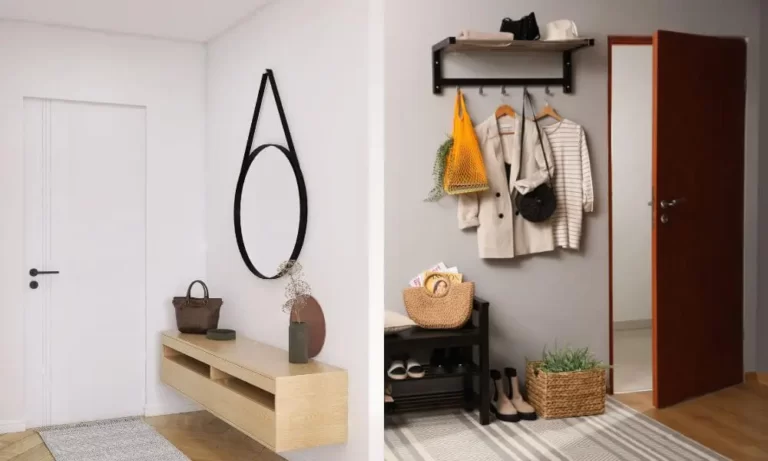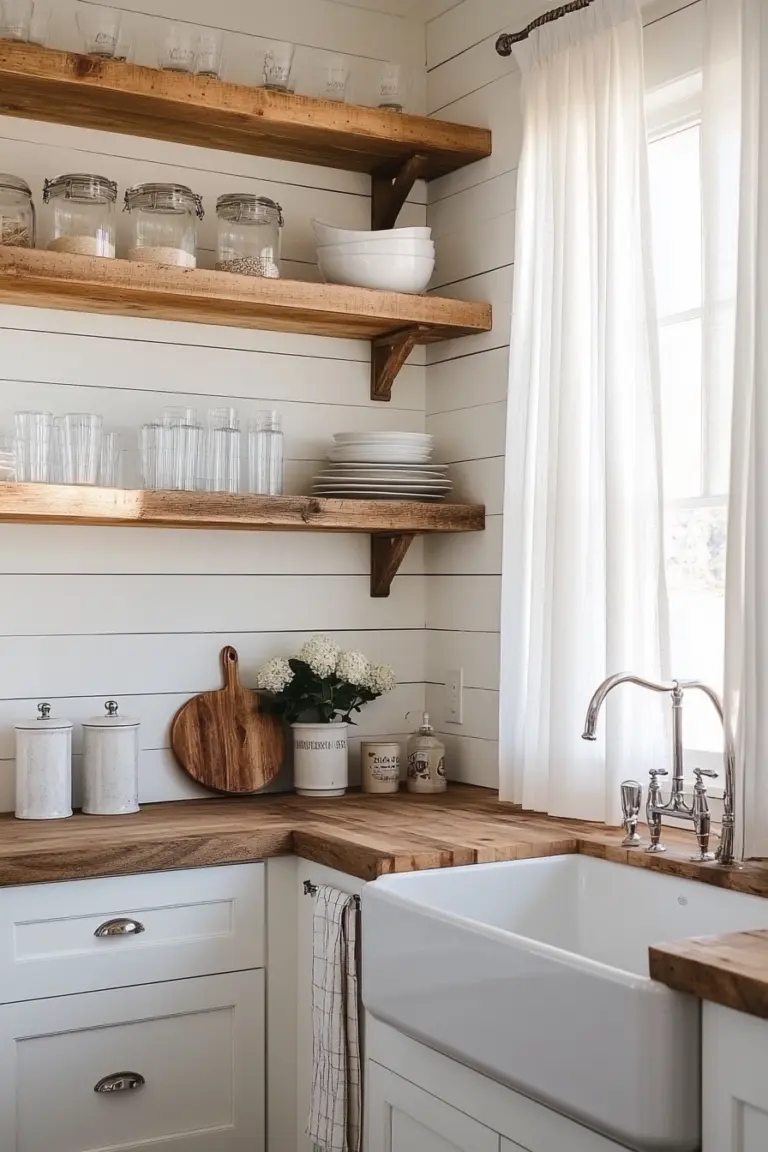21 Clever Small TV Wall Ideas to Maximize Your Space
The challenge of designing a small TV wall often feels like solving a spatial puzzle. How do you balance aesthetics with functionality when square footage is limited? Unlike larger spaces where TVs can be surrounded by elaborate built-ins or statement walls, small areas require thoughtful planning to avoid overwhelming the room.
Whether you’re working with a compact apartment, a cozy bedroom, or a modest living room, your TV wall can become a stylish focal point rather than a design challenge. This comprehensive guide explores practical, space-conscious solutions that transform small TV walls from eyesores into design assets.
Why Small TV Walls Deserve Special Attention
Small spaces magnify design mistakes. A TV that looks proportional in a spacious living room might dominate a compact area, creating visual imbalance. Additionally, small rooms often serve multiple purposes, making versatility essential.
Interior designer Jamie Santos explains, “In limited spaces, every design decision carries more weight. Your TV wall needs to be functional without sacrificing style or making the room feel cramped. It’s about smart solutions, not compromise.”
Assessing Your Space Before You Begin
Before implementing any TV wall ideas, consider these crucial factors:
Room Dimensions: Measure your wall space accurately, including height and width.
Viewing Distance: The optimal TV viewing distance is approximately 1.5 to 2.5 times the diagonal screen size. For example, a 43-inch TV works best when viewed from about 5.5 to 9 feet away.
Wall Construction: Determine if your wall can support mounted TVs and shelving (particularly important for apartments and rentals).
Traffic Flow: Ensure your TV wall doesn’t obstruct natural movement patterns in the room.
Lighting Conditions: Note natural light sources to avoid screen glare.
TV Size Guide for Small Spaces
- Very Small Rooms (8×10 ft): 32-43 inches TV, 4-6.5 feet viewing distance
- Small Rooms (10×12 ft): 43-50 inches TV, 5.5-8 feet viewing distance
- Medium Rooms (12×15 ft): 50-55 inches TV, 6.5-9 feet viewing distance
1. Floating Wall-Mounted TV with Hidden Cables
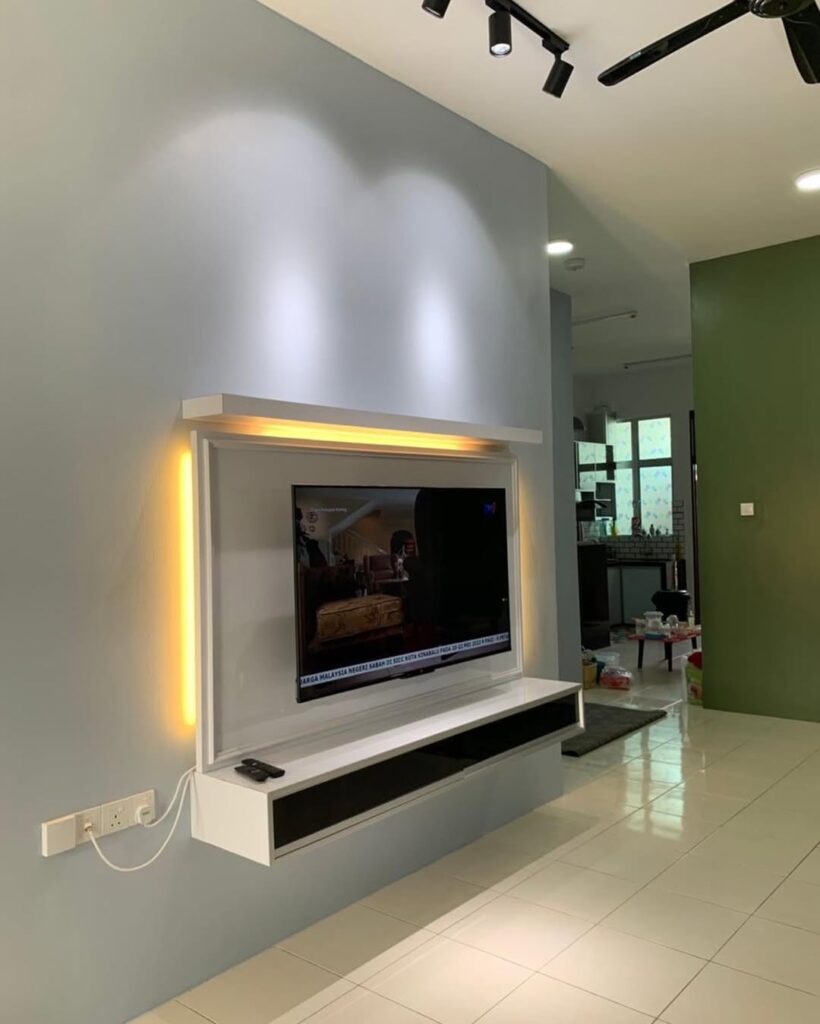
Photo Credit: @kabinetdecohouz
The simplest solution often yields the cleanest results in small spaces. Wall-mounting your TV eliminates the need for a bulky entertainment center, instantly freeing up valuable floor space.
Implementation Tips:
- Use a slim, low-profile mount that positions the TV close to the wall
- Install a cable management system to hide wires (consider in-wall cable channels for a truly seamless look)
- Position the TV at eye level when seated (typically 42-48 inches from the floor to the center of the screen)
- For renters, consider tension rod mounting systems or furniture-based solutions that don’t require wall modification
DIY designer Sarah Chen notes, “The key to successful TV mounting in small spaces is meticulous cable management. Even the sleekest mounted TV looks cluttered if surrounded by dangling wires.”
Related: Smart TV Placement: Where to Put a TV in a Small Living Room
2. Integrated Floating Shelves for Balanced Visual Weight

Photo Credit: @ndzalama_furniture_sa
Adding slim floating shelves around your TV creates visual balance while providing storage without the bulkiness of traditional entertainment units.
Design Approach:
- Install 2-3 narrow shelves (6-8 inches deep) to frame the TV
- Arrange shelves asymmetrically for a modern look or symmetrically for classic appeal
- Keep shelf styling minimal—overcrowding creates visual chaos in small spaces
- Consider shelves in the same finish as your wall for a seamless appearance
Styling Tip: Use the rule of three for shelf decor—group items in threes or use objects of varying heights to create visual interest without clutter.
3. Multi-Functional TV Wall with Built-In Work Space
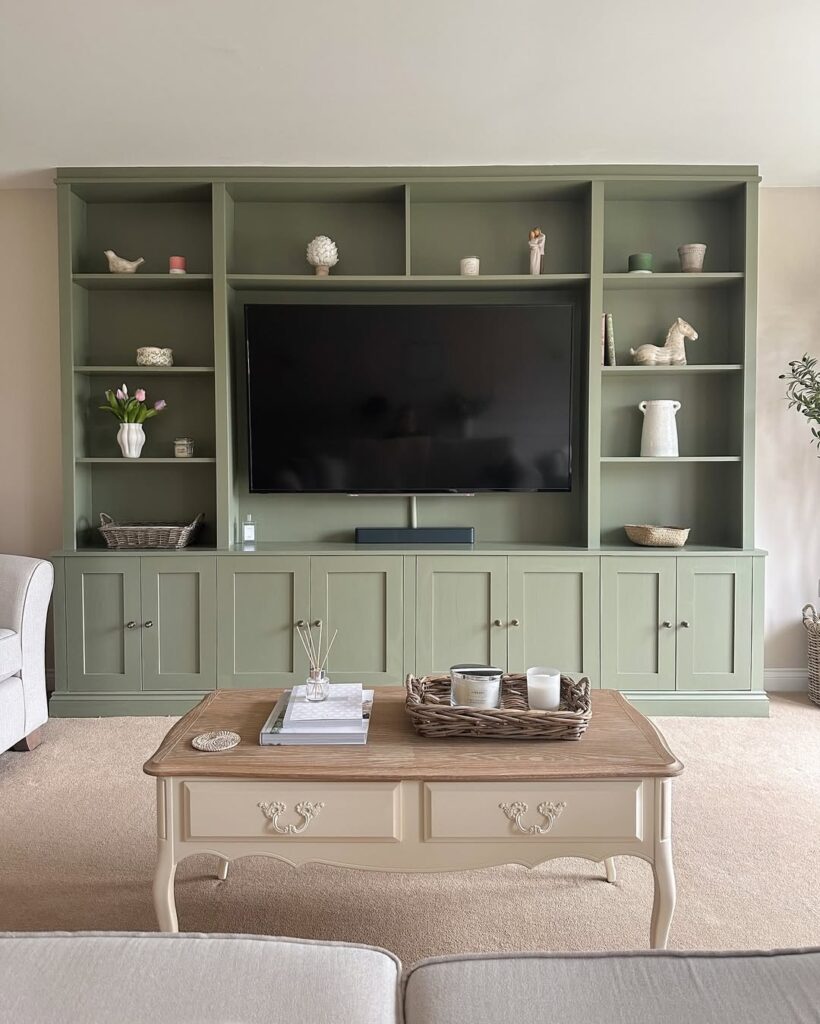
Photo Credit: @homebylyndsey
In today’s hybrid living environments, TV walls that serve multiple purposes maximize utility in small spaces. Integrating a compact desk or workspace alongside your TV creates a functional nook without requiring additional room.
Implementation Considerations:
- Position the desk portion to the side or below the TV, maintaining separate visual zones
- Use consistent materials across both elements for cohesion
- Install task lighting that won’t create glare on the screen
- Incorporate cable management solutions that accommodate both entertainment and work devices
- Consider a fold-down desk surface for ultra-compact spaces
Interior designer Miguel Rodriguez explains, “The key to successful multi-functional TV walls is zoning. Visual dividers—whether through color blocking, different materials, or subtle partitions—help the brain understand these as separate functional areas despite their proximity.”
4. Minimalist TV Wall with Concealed Storage
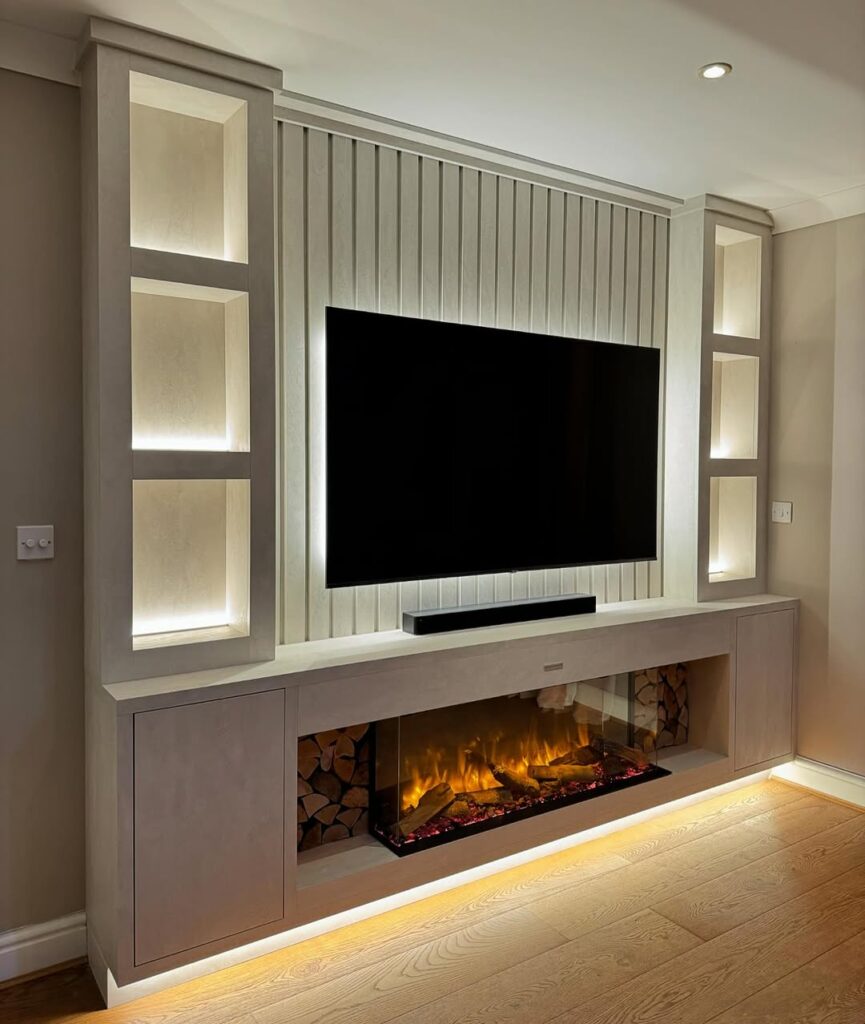
Photo Credit: @bournebespoke
When space is limited, hidden storage becomes essential. A minimalist TV wall with concealed compartments maintains clean lines while providing practical storage solutions.
Storage Solutions:
- Wall-mounted floating cabinets with push-to-open mechanisms eliminate the need for protruding hardware
- Sliding panels that cover the TV when not in use
- Shallow wall niches beside or below the TV for essential items
- Hidden drawer systems that appear as architectural wall elements
Material Considerations: Matt finishes reduce visual weight in small spaces. Consider soft-close mechanisms for doors and drawers to enhance the premium feel without adding bulk.
5. Picture Frame TV Integration for Studio Apartments
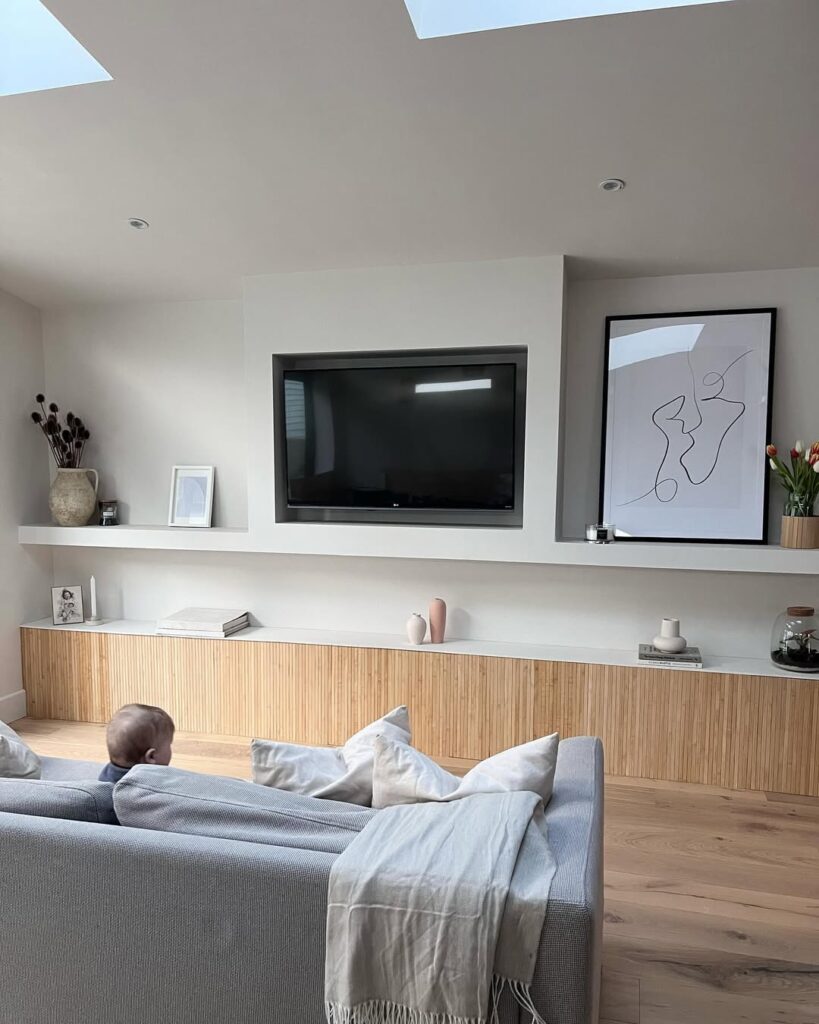
Photo Credit: @home_with_the_buckinghams
For extremely limited spaces like studio apartments, Samsung’s The Frame TV or similar options provide an elegant solution. When not in use, these TVs display artwork, transforming your entertainment center into visual decor.
Styling Tips:
- Select artwork that complements your overall color scheme
- Consider a gallery wall arrangement with real art pieces surrounding the TV
- Use a consistent frame style for both the TV and surrounding artwork
- Install subtle lighting that enhances both viewing modes
Budget Alternative: If a Frame TV exceeds your budget, consider DIY solutions like custom frames for standard TVs or decorative panels that slide over the screen when not in use.
6. Space-Saving Corner TV Wall Solutions
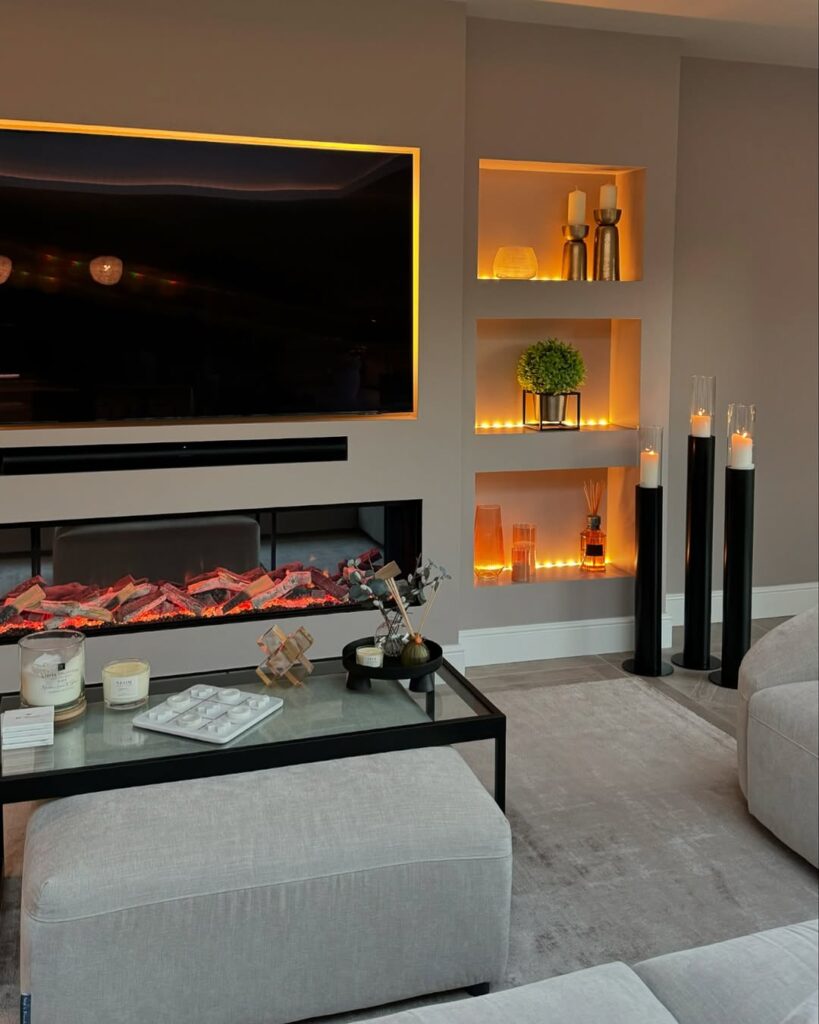
Photo Credit: @louise_andallthingshome
Corners often represent underutilized space in small rooms. By designing a TV wall that wraps around a corner, you maximize awkward spatial configurations.
Design Approaches:
- Use floating corner shelves that create a seamless transition around the angle
- Consider corner-mounted TV brackets that can be adjusted for optimal viewing
- Implement L-shaped cabinetry that follows the corner configuration
- Use lighting to soften the angular nature of corner installations
“Corner installations require precise measurements,” cautions home renovation expert Carlos Mendes. “The viewing angle becomes critical—ensure your TV can be positioned to avoid neck strain from any common seating position.”
7. Textured Backdrop for Visual Interest
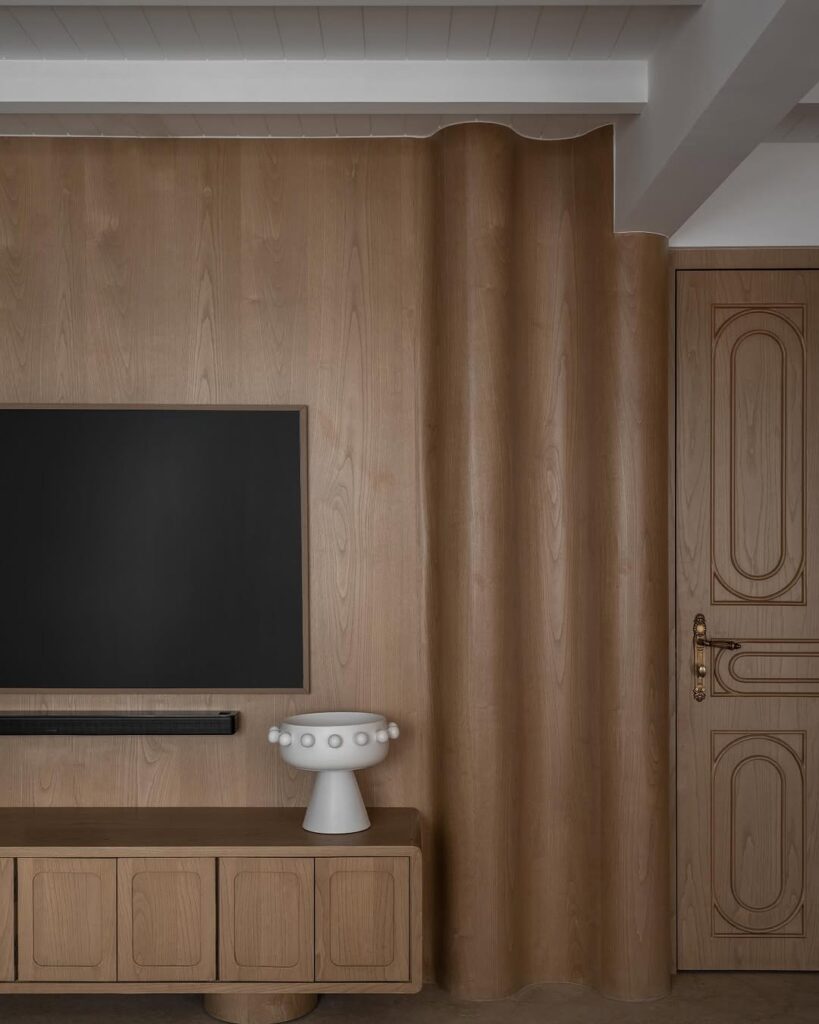
Photo Credit: @onestinteriors
Small walls benefit from textured elements that add dimension without requiring physical space. A textured backdrop behind your TV creates visual interest while maintaining a small footprint.
Texture Options:
- Thin wood slats (vertical for height, horizontal for width)
- Acoustic panels that improve sound quality while adding texture
- Peel-and-stick textured wallpaper (ideal for renters)
- Microcement finishes for an industrial look
Design Tip: Limit the texture to the immediate TV area rather than the entire wall to create a designated zone without overwhelming the space.
Related: How To Coordinate Coffee Table & TV Stand (Like A Designer)?
8. Small TV Wall with Integrated Lighting System
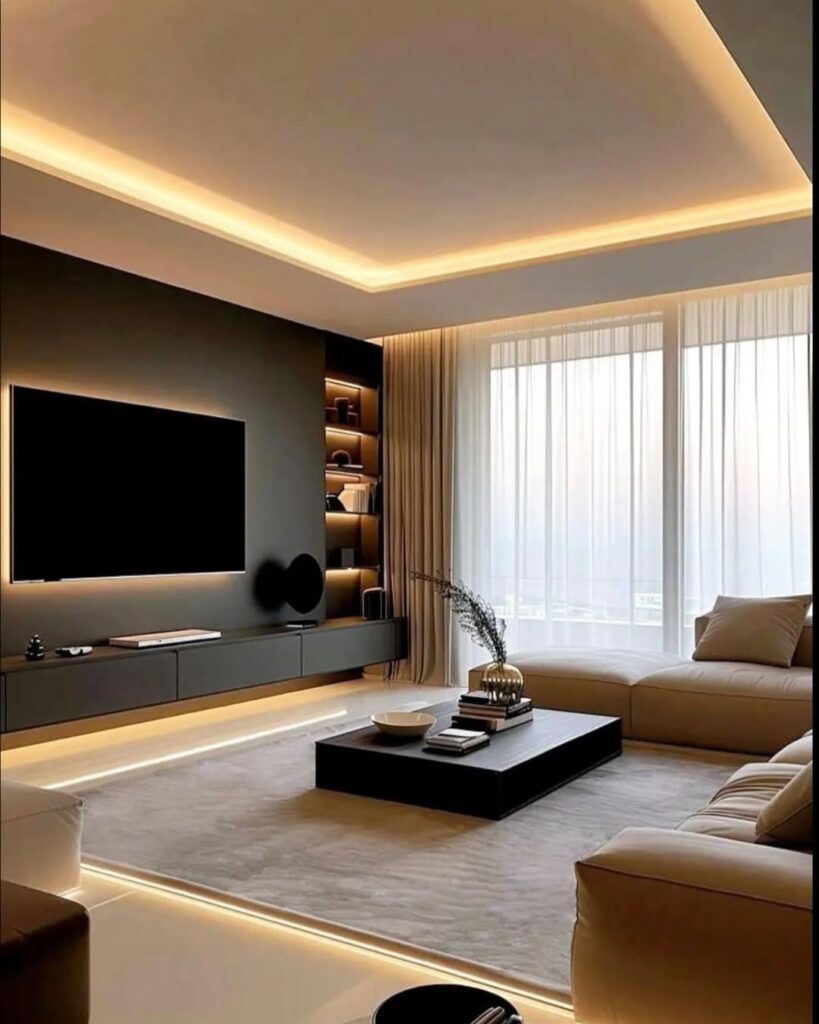
Photo Credit: @lux.home.decoration
Strategic lighting elevates a small TV wall from basic to sophisticated while improving the viewing experience. Bias lighting—illumination behind and around the TV—reduces eye strain during extended viewing and enhances perceived picture quality.
Lighting Approaches:
- LED strip lights behind the TV (choose warm white for ambiance or RGB for customizable effects)
- Recessed picture lights above artwork surrounding the TV
- Wall sconces positioned at eye level flanking the TV
- Under-shelf lighting for integrated floating shelves
“The cardinal rule of TV wall lighting is avoiding glare on the screen,” notes lighting designer Elena Soto. “Position lights to illuminate the wall rather than the screen itself, and opt for dimmable options that adapt to different viewing conditions.”
9. Space-Efficient TV Gallery Wall Combination
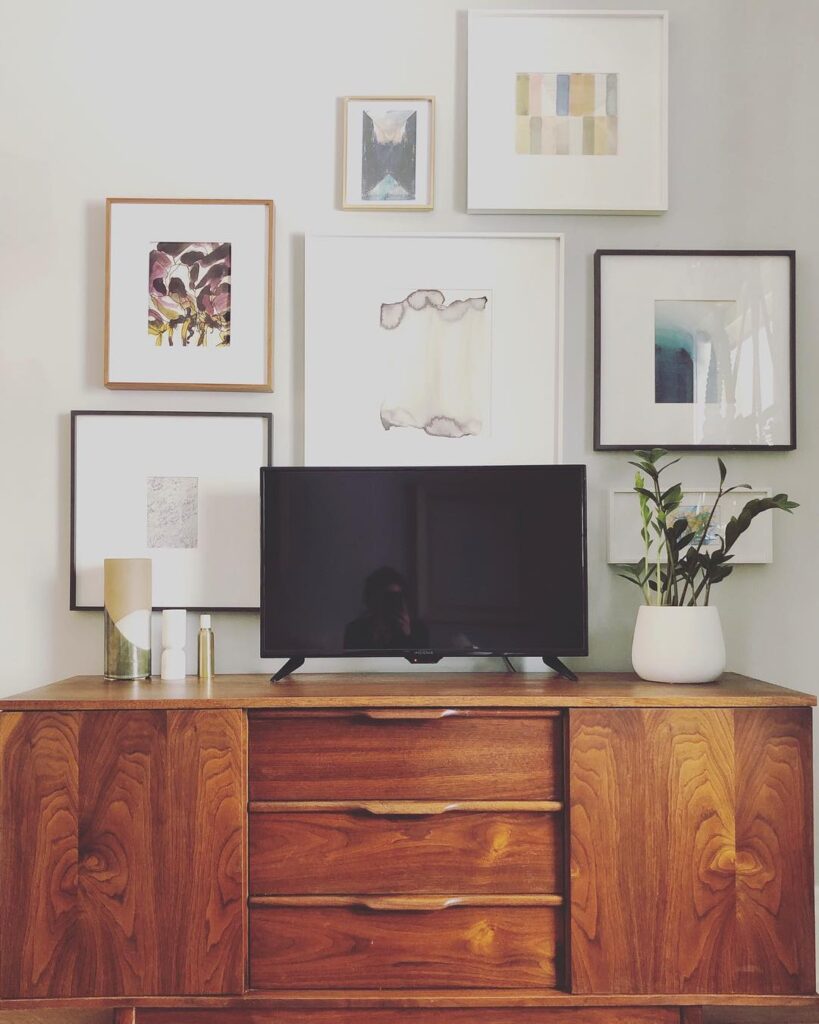
Photo Credit: @neatntiny.blog
Gallery walls remain popular, but many homeowners struggle to incorporate TVs into these arrangements. For small spaces, a thoughtfully designed TV gallery wall creates a cohesive look while disguising the technology.
Design Strategies:
- Use frames in similar styles but varying sizes around the TV
- Maintain consistent spacing between all elements (including the TV)
- Opt for a unified color palette in artwork to minimize visual chaos
- Consider black and white photography or monochromatic art if your TV has a black frame
Balance Tip: Position your TV slightly off-center within the gallery arrangement. This asymmetry creates visual interest and prevents the TV from dominating the composition.
Designer Hannah Parks suggests, “Think of your TV as simply one element in the overall composition. The key is creating a balanced arrangement where no single piece—TV included—demands all the attention.”
10. Small Space-Friendly Panel Systems
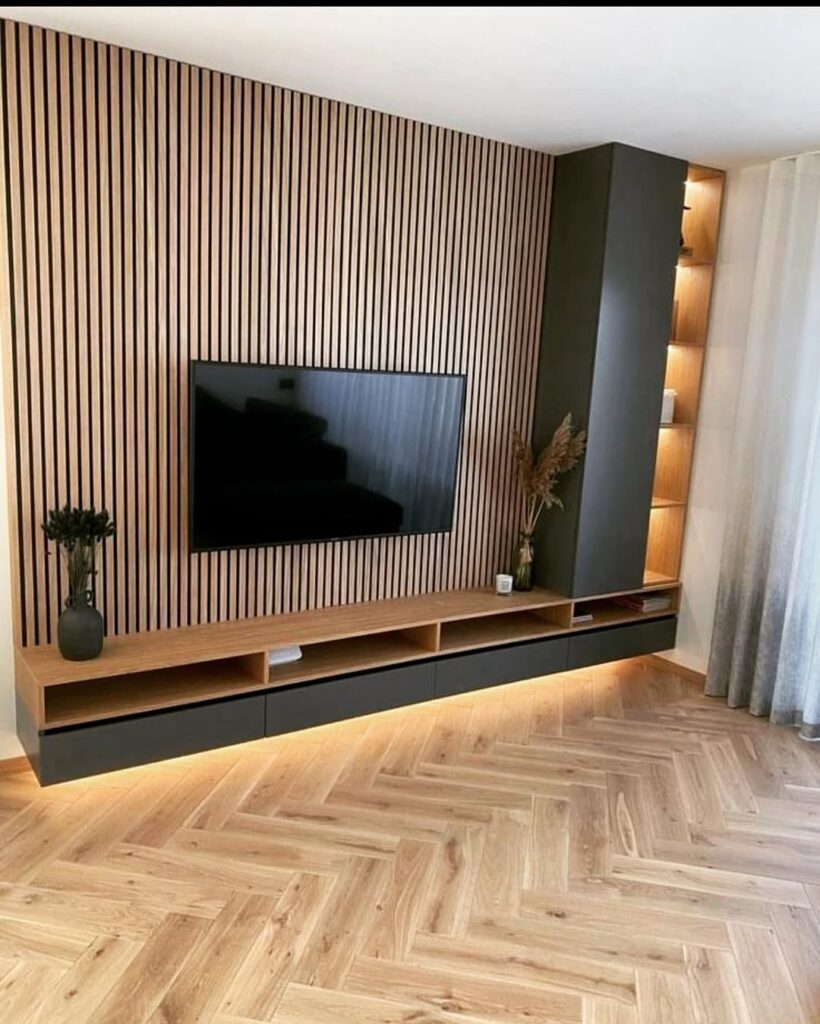
Photo Credit: @ivywood.interiors
Panel systems offer an elegant solution for small TV walls, providing visual structure without the bulk of built-ins. These modular systems can be customized to your exact wall dimensions.
Panel Options:
- Slatted wood panels that create texture while concealing mounting hardware
- Fabric-covered acoustic panels that improve sound quality
- Metal grid systems that accommodate clip-on shelves and accessories
- Peel-and-stick panel kits designed specifically for renters
“Panel systems excel in small spaces because they create the illusion of architectural detail without protruding into the room,” explains interior architect David Chen. “They add visual interest to the wall plane itself rather than extending outward.”
11. Budget-Friendly DIY TV Accent Wall Ideas
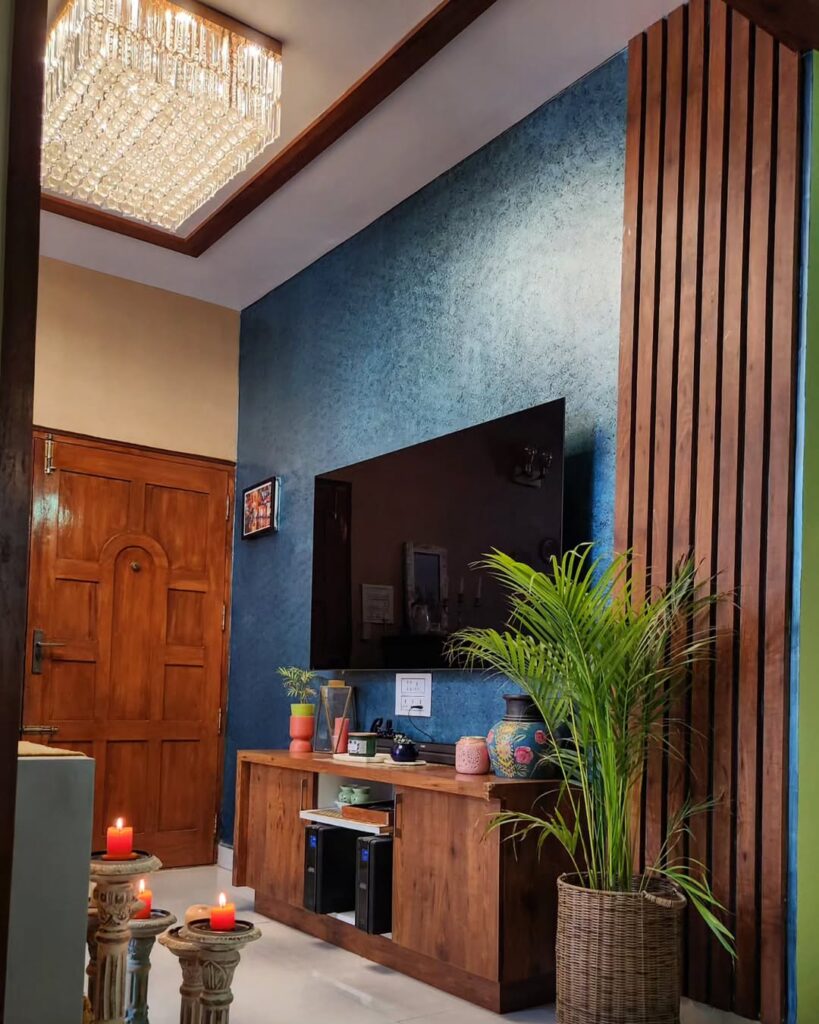
Photo Credit: @thehomedecorista
Limited space often coincides with limited budgets. These DIY approaches create stylish TV walls without breaking the bank.
Affordable Transformations:
- Painted geometric accent pattern behind the TV (use painter’s tape for clean lines)
- Contact paper or peel-and-stick wallpaper as a temporary backdrop
- Picture ledges repurposed as sleek media shelves
- Thrifted cabinet doors mounted as decorative frames around the TV
Weekend Project: Create a custom wood frame for your TV using simple molding from a hardware store. Paint it to match your TV or choose a contrasting color for visual impact.
12. Small TV Wall with Vertical Storage Solutions

Photo Credit: @millahomedecor
When floor space is scarce, think vertically. Utilizing the full height of your TV wall maximizes storage capacity without encroaching on living space.
Vertical Design Approaches:
- Floor-to-ceiling narrow shelving flanking the TV
- Tall, slim cabinets with a mixture of open and closed storage
- Staggered floating boxes creating visual rhythm while providing storage
- Pegboard systems that allow for customizable organization
Space-Saving Tip: Install doors on upper storage areas to conceal visual clutter, while keeping frequently accessed items in lower open shelving for convenience.
Vertical Storage by Room Type:
- Living Room: Mixed open/closed shelving to display decor while hiding electronics
- Bedroom: Closed cabinetry with minimal hardware to reduce visual stimulation
- Home Office: Open shelving with integrated desk to improve workflow accessibility
- Studio Apartment: Modular, adjustable systems that adapt as needs change
13. Small TV Wall Ideas for Bedrooms
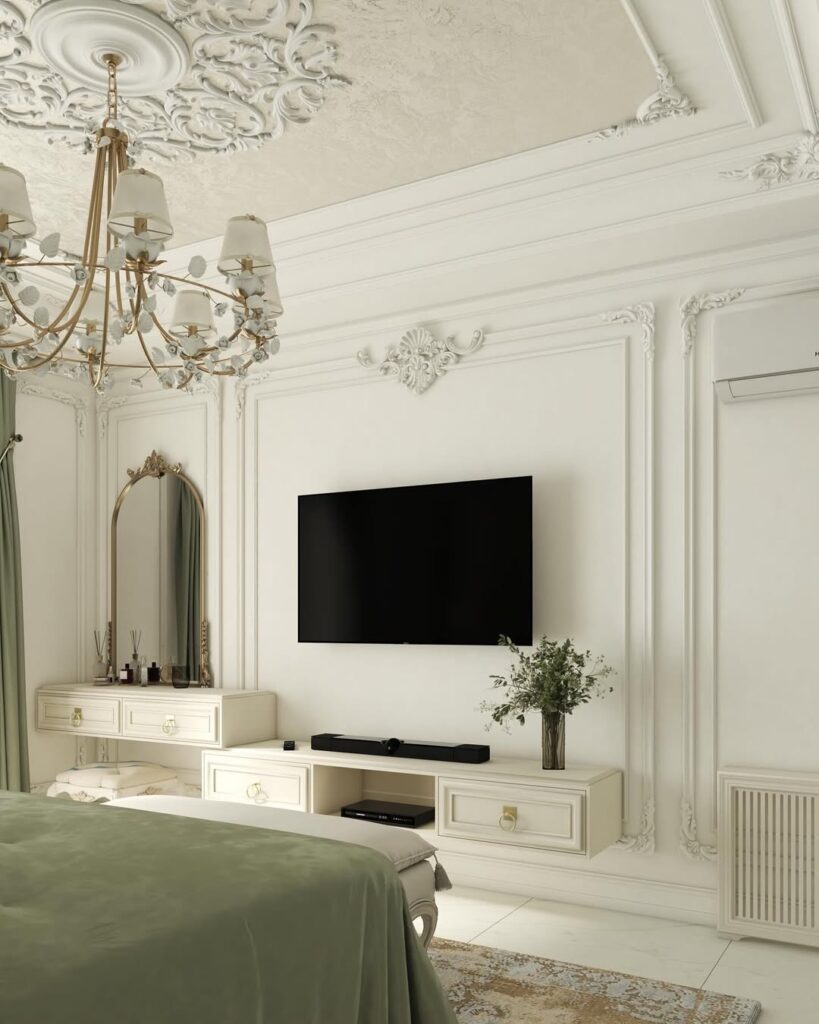
Photo Credit: @sinomi_design
Bedroom TV walls present unique challenges, requiring solutions that don’t disrupt sleep or overwhelm intimate spaces.
Bedroom-Specific Approaches:
- TV mounted on a swivel bracket that can be positioned during use and tucked away when not needed
- Wall-mounted TV with decorative panels that slide closed
- Under-mounted TV that drops down from ceiling storage (ideal for foot-of-bed viewing)
- Integrated TV within wardrobe or storage furniture
Sleep specialist Dr. Maya Rodriguez cautions, “Consider systems that fully conceal the TV in bedrooms. The presence of screens can disrupt melatonin production even when they’re turned off due to the psychological association with activity.”
14. Rental-Friendly Small TV Wall Solutions

Photo Credit: @interiorworksfaridabad
Renters face additional challenges when designing TV walls due to restrictions on permanent modifications. These solutions create stylish setups without jeopardizing security deposits.
Non-Destructive Options:
- Tension rod mounting systems that press against walls without drilling
- Furniture-based solutions like slim console tables or ladder desks
- Command strip-compatible lightweight floating shelves
- Decorative room dividers that create TV zones without wall attachment
Rental Hack: Use furniture to create a false wall. A slim bookcase positioned perpendicular to the wall creates a TV nook while providing additional storage—perfect for awkward open floor plans.
“The key for renters is thinking in terms of furniture rather than architecture,” advises designer Sophie Lang, who specializes in rental transformations. “Look for pieces that can travel with you and serve multiple functions.”
15. Small TV Wall with Integrated Sound Solutions
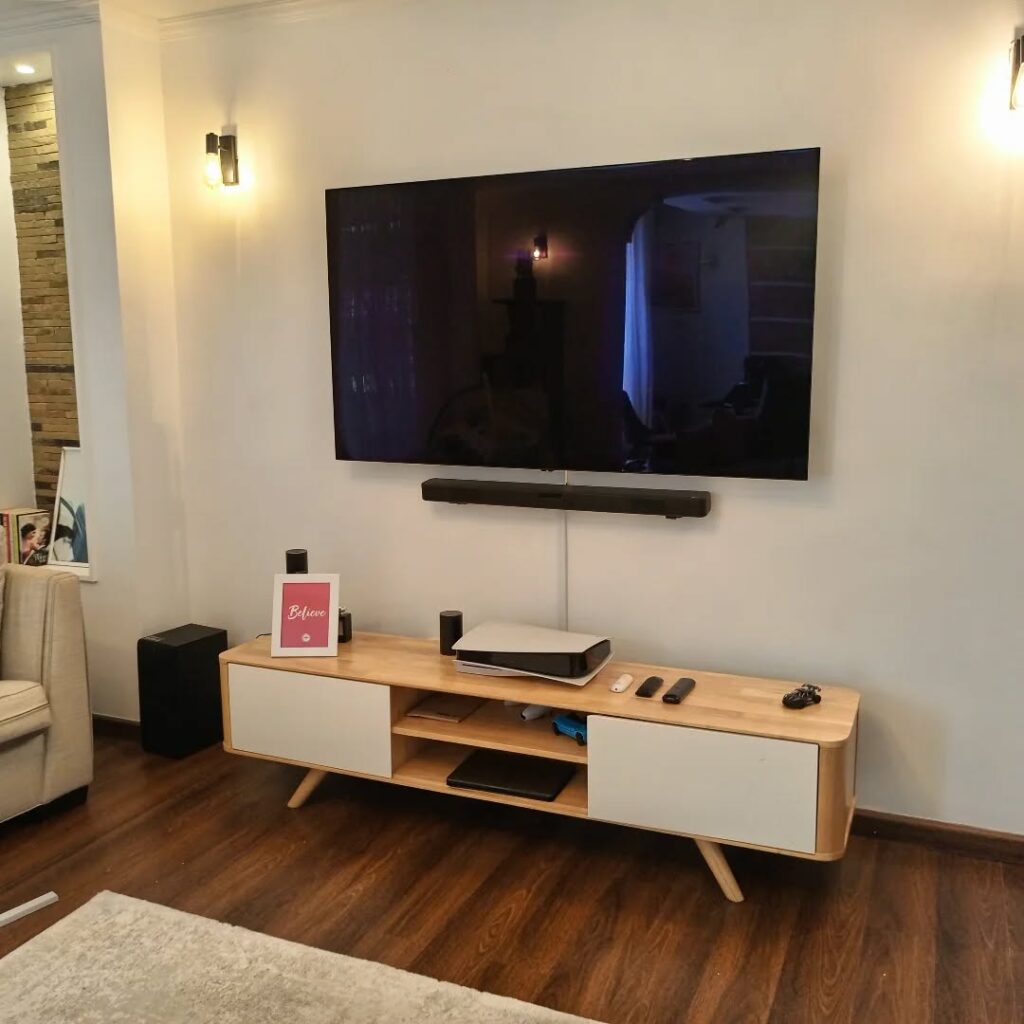
Photo Credit: @Instagram
Quality audio enhances the viewing experience, but traditional speaker setups consume valuable space. These integrated solutions deliver superior sound without spatial compromise.
Space-Saving Audio:
- Ultra-thin soundbars mounted directly beneath the TV
- In-wall speaker systems that eliminate spatial footprint
- Acoustic panels that double as decorative elements while improving sound quality
- Bluetooth speaker systems that can be positioned flexibly
Audio Tip: Consider directional speakers that focus sound toward the seating area, reducing the need for higher volumes that might disturb neighbors—especially important in apartments and condos.
16. TV Wall Ideas for Awkward Spaces
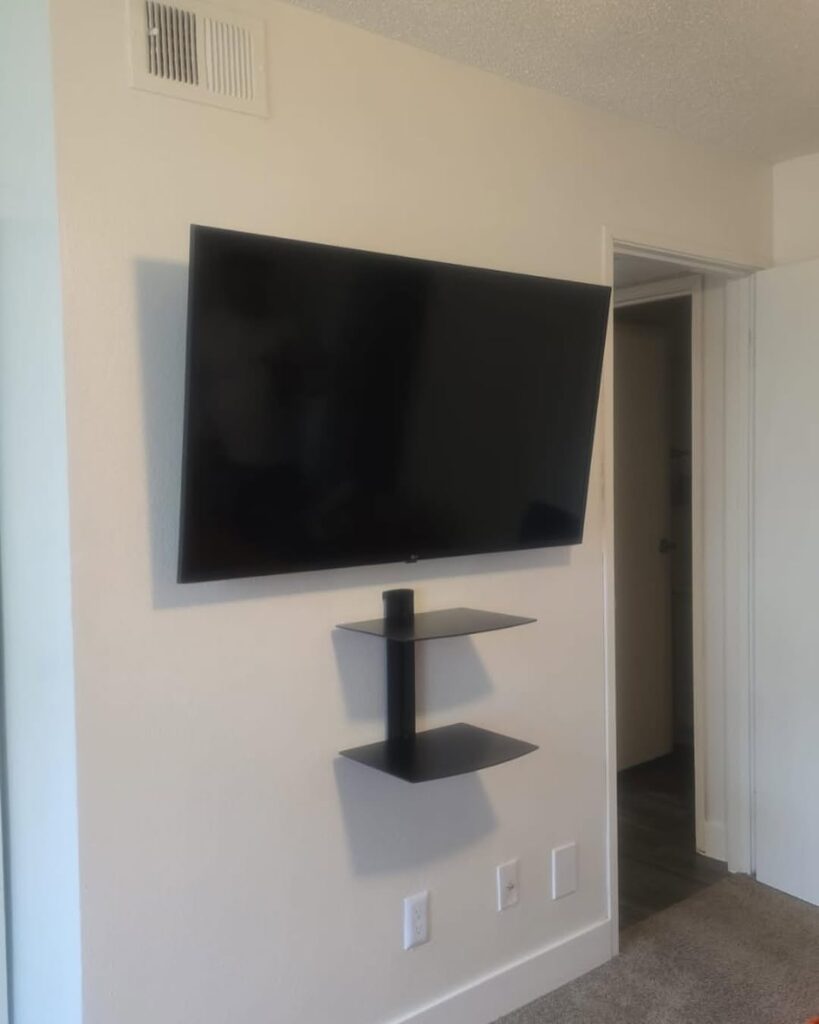
Photo Credit: @az_ittechnology
Many small homes feature challenging architectural elements like sloped ceilings, niches, or structural columns. These solutions transform awkward features into design assets.
Working with Challenges:
- Custom-built media walls that incorporate existing structural elements
- TV mounted on articulating arms for flexible positioning in oddly shaped rooms
- Floating cabinet systems that can be sized to fit unusual dimensions
- Mirror-backed niches that create depth in shallow recesses
Architect Jesse Thompson observes, “In small spaces, architectural quirks often become the most interesting design features. Embracing rather than fighting these elements leads to more authentic, personalized spaces.”
17. Small TV Wall with Smart Home Integration
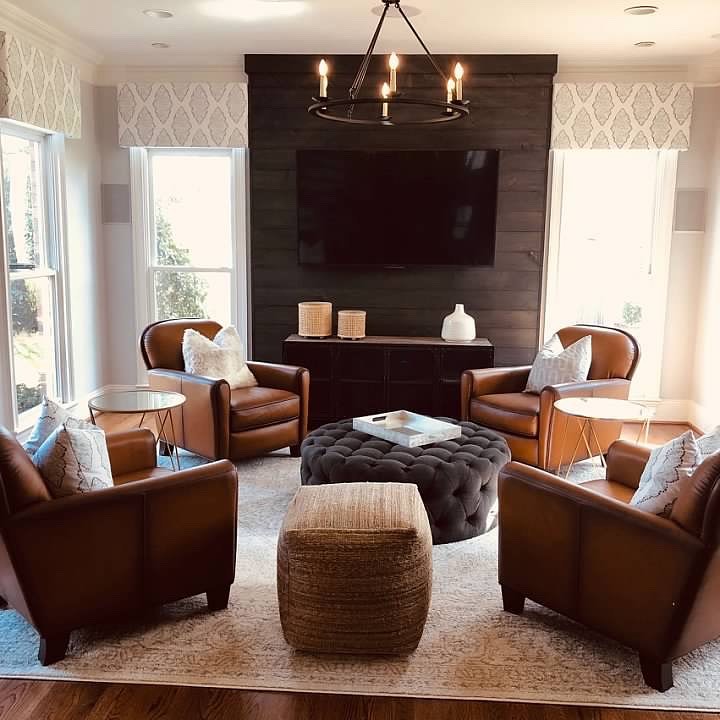
Photo Credit: @sjldesigns
Smart technology maximizes functionality without requiring additional space. These integrated solutions enhance entertainment while maintaining minimal visual impact.
Smart Solutions:
- Voice-controlled ambient lighting systems
- Motorized mounts that adjust TV position based on time of day or activity
- Integrated charging stations for devices hidden within wall elements
- Automated window treatments that adjust based on TV viewing conditions
Hidden Tech: Consider recessed wall niches with integrated charging stations and cable management for gaming consoles, streaming devices, and controllers.
18. Sustainable Small TV Wall Ideas
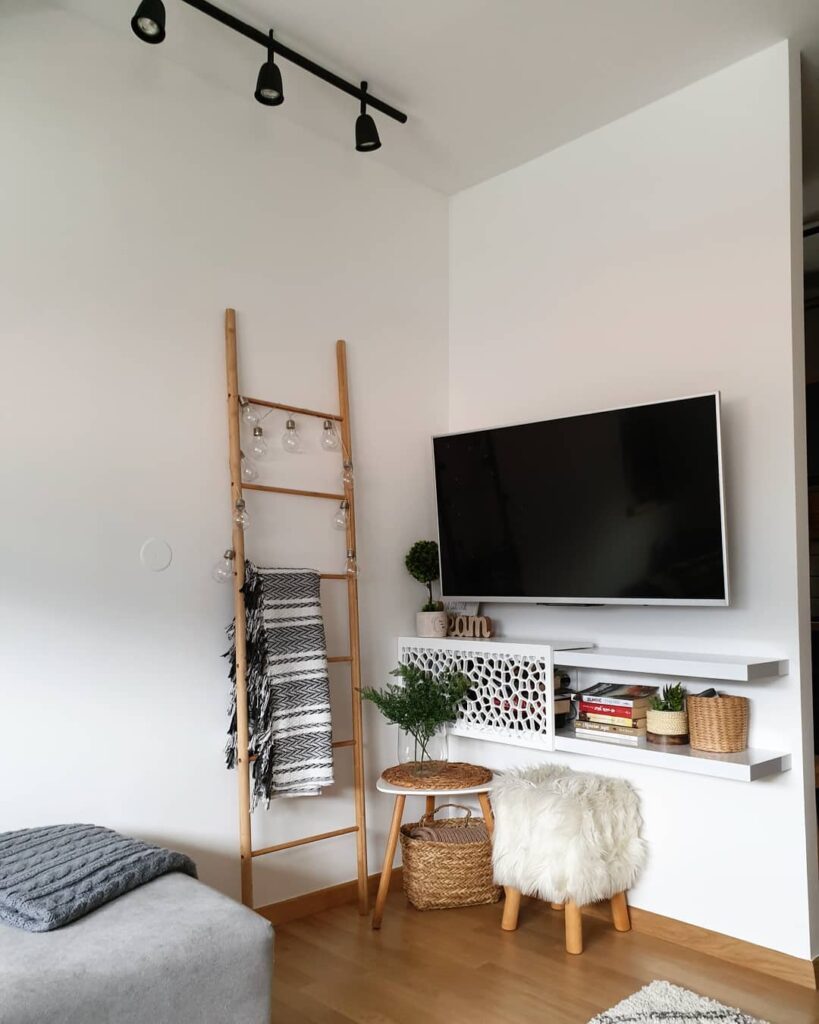
Photo Credit: @i.tu.i.tamo
Eco-conscious design doesn’t require extensive space. These sustainable approaches create stylish TV walls with minimal environmental impact.
Green Solutions:
- Reclaimed wood panels for texture and warmth
- Bamboo or other rapidly renewable materials for shelving
- Low-VOC finishes and adhesives for healthier indoor air quality
- Energy-efficient integrated lighting systems
Environmental designer Olivia Green recommends, “Look for multifunctional elements that reduce the total materials needed. For example, acoustic panels that improve sound quality while providing visual interest eliminate the need for separate decorative elements.”
19. Small TV Wall Cable Management Solutions

Photo Credit: @braneadesign
The challenge of unsightly cables becomes magnified in compact spaces. These innovative cable management solutions maintain the clean aesthetics of your small TV wall.
Professional-Looking Cable Solutions:
- In-wall cable channels (some designed specifically for renters with minimal wall damage)
- Cord covers painted to match your wall color for seamless integration
- Cable management boxes that hide power strips and adapters
- Fabric cable sleeves that consolidate multiple cords into a single visual element
DIY Hack: Use decorative washi tape or fabric cord covers to transform visible cables into intentional design elements when complete concealment isn’t possible.
Technology integration specialist Devon Richards notes, “Effective cable management in small spaces isn’t just about hiding cords—it’s about planning their paths logically from the beginning. Consider the location of outlets and device connections before finalizing your TV placement.”
20. TV Wall Ideas for Multipurpose Rooms
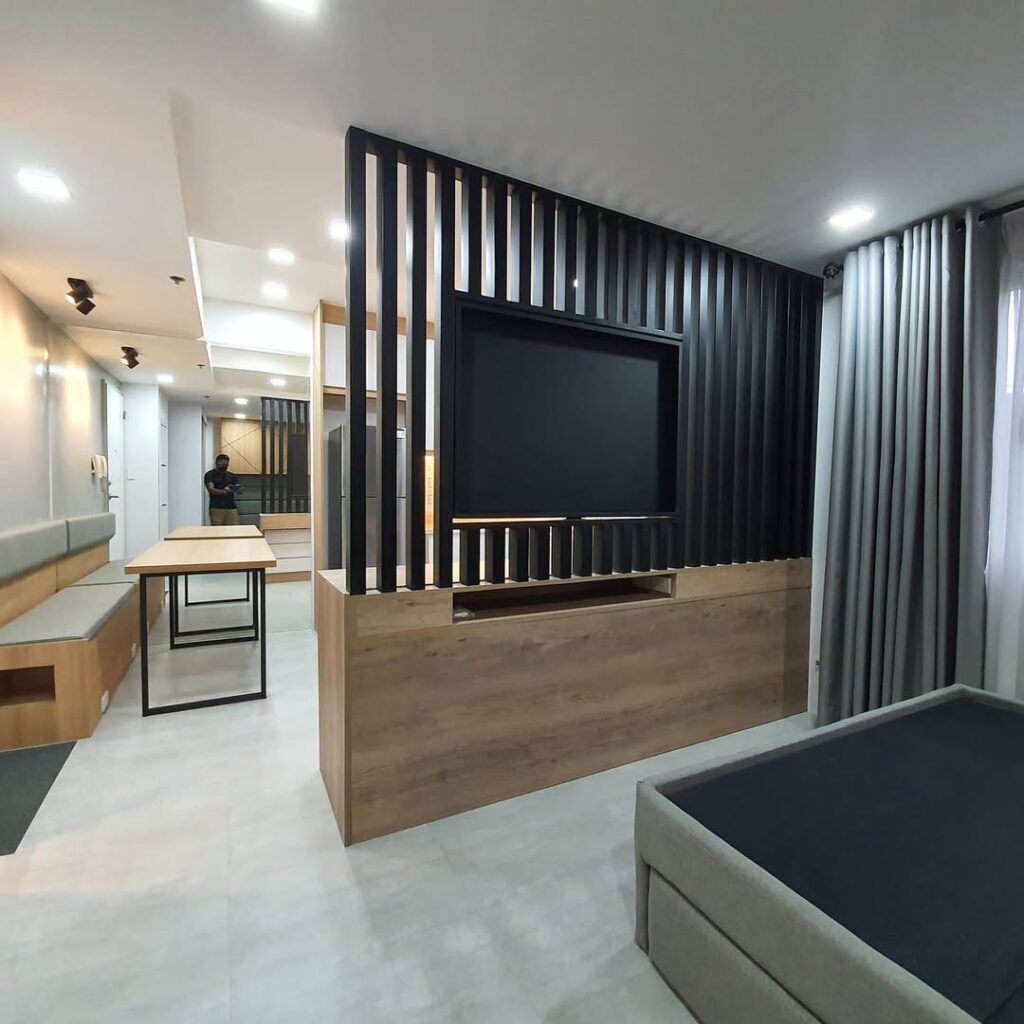
Photo Credit: @mcgn.interiors
Many small homes feature rooms that serve multiple functions. These flexible TV wall designs adapt to changing needs throughout the day.
Adaptable Designs:
- Rotating TV mounts that adjust between work and relaxation orientations
- Pull-down projection screens that conceal when not in use
- Murphy bed systems with integrated TV walls for guest room/office combinations
- Sliding panel systems that reveal or conceal the TV based on current room function
“The key to successful multipurpose rooms is creating distinct zones that can visually transform,” explains interior designer Jasmine Torres. “Your TV wall should have at least two ‘states’—entertainment mode and its alternative function—with easy transitions between them.”
21. Small TV Wall Design for Optimal Viewing Experience
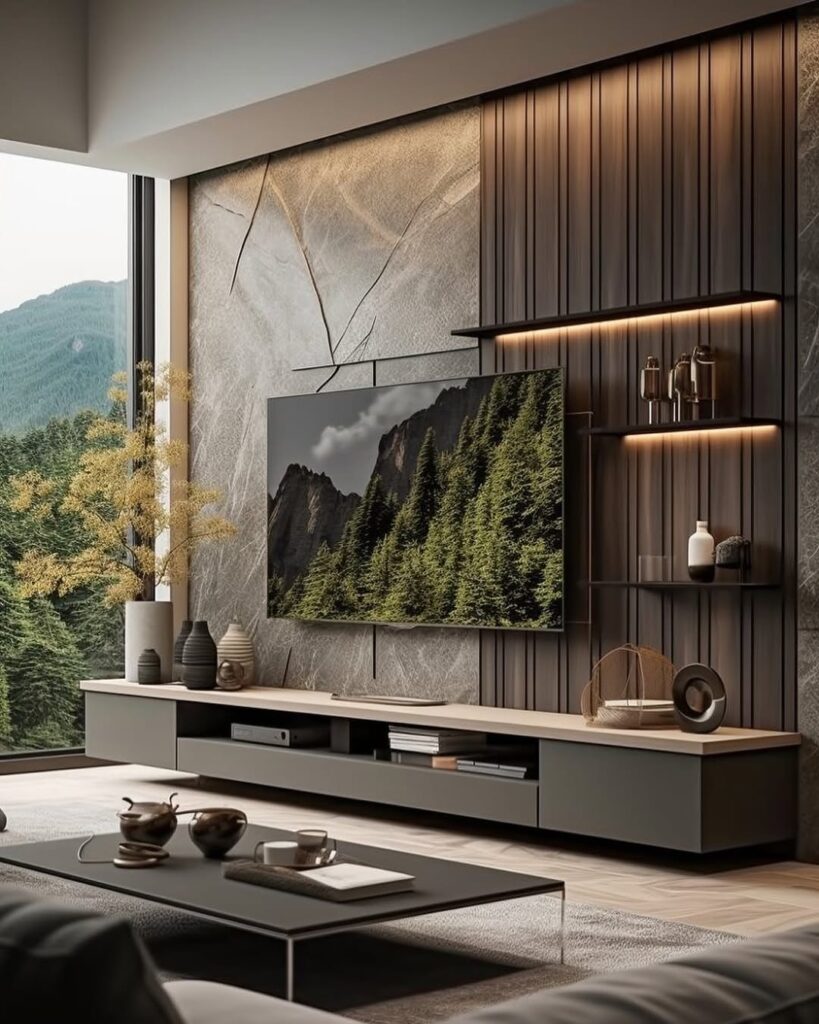
Photo Credit: @inchtwoinch
Technical considerations are just as important as aesthetics. These design principles ensure comfortable viewing despite space limitations.
Viewing Optimization:
- Position the TV at eye level when seated (typically 42-48 inches from floor to screen center)
- Consider anti-glare treatments for rooms with challenging light conditions
- Install articulating mounts for flexible viewing angles when space constraints limit furniture placement
- Implement bias lighting behind the TV to reduce eye strain during extended viewing
Ergonomic Tip: In tight spaces where ideal viewing distance isn’t possible, consider a slightly smaller TV with higher resolution rather than cramming a larger screen into an inadequate space.
Implementation Guide: Creating Your Perfect Small TV Wall
Step 1: Assessment and Planning
- Measure your available wall space precisely
- Consider viewing angles from all seating positions
- Note electrical outlet locations and potential cable routing
- Evaluate natural light patterns throughout the day
- Determine primary room functions beyond entertainment
Step 2: Design Development
- Create a scaled drawing or use a room planning app
- Consider both horizontal and vertical space utilization
- Plan for current and future technology needs
- Select a cohesive material and color palette
- Determine which elements require professional installation
Step 3: Phased Implementation
- Begin with essential functional elements (TV mounting, electrical work)
- Add storage and organizational components
- Incorporate lighting systems
- Finish with decorative elements and styling
Expert FAQ: Small TV Wall Solutions
What’s the biggest mistake people make when designing small TV walls?
The most common error is prioritizing screen size over proportional balance,” explains interior designer Eliza Chen. “A TV that’s too large for the wall creates visual imbalance and can actually diminish your viewing experience by overwhelming the space. Always measure your wall first, then select an appropriately sized TV.”
How can I make my small TV wall feel more luxurious without extensive renovations?
Lighting makes the biggest impact for minimal investment. Interior lighting specialist Mark Williams recommends, “Install LED strip lighting behind your TV or incorporate wall sconces with dimmable bulbs. The soft, ambient glow instantly elevates the space without requiring structural changes—perfect for rentals or budget-conscious upgrades.
What’s one simple weekend upgrade that dramatically improves a small TV wall?
Cable management,” says home organization expert Lena Park without hesitation. “Visible cords instantly create a cluttered, unfinished appearance regardless of how thoughtfully you’ve designed the rest of the wall. Simple cord covers or cable management boxes can transform your space in under an hour.
How do I balance technology needs with aesthetics in a small space?
Technology integration specialist Devon Richards advises, “Prioritize your must-have devices and be ruthless about eliminating redundant technology. Modern streaming devices eliminate the need for multiple components. For essential equipment, look for wall-mounting options that position devices behind the TV rather than below it.
Conclusion
Small TV walls don’t require compromise—they demand creativity. By focusing on multifunctionality, vertical space utilization, and thoughtful integration with your overall design scheme, even the most compact TV wall can become a stylish, practical focal point.
The most successful small TV walls address both aesthetic and functional needs while acknowledging the unique characteristics of your space. Whether you’re working with a rental apartment, a cozy bedroom, or a compact living area, these ideas provide a foundation for creating a television viewing area that enhances rather than detracts from your home’s design.
Remember that in small spaces, every design decision carries greater visual weight. By approaching your TV wall with intention and purpose, you transform what could be an eyesore into an asset—proving that limitations often inspire the most innovative solutions.


